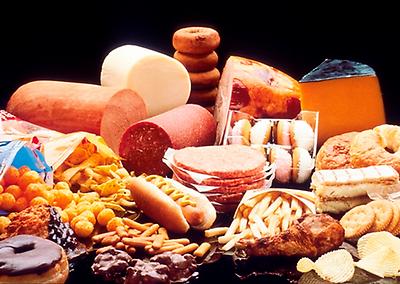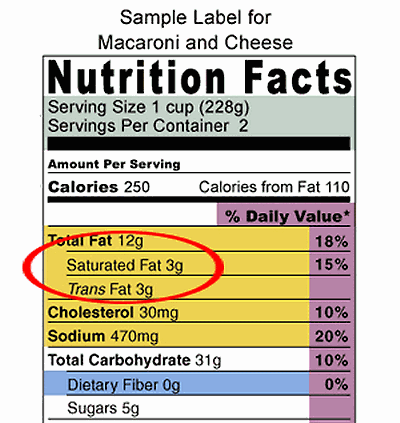Last Updated on March 18, 2016

As you age, making the right food choices becomes crucial to maintaining good health. Nutrient-rich foods help your body stay strong and functional, while limiting certain ingredients can prevent potential health complications. Below, we’ll cover the essential foods to include, which ones to limit, and the best practices for supporting overall well-being in later years.
Avoid “Empty Calories”
An easy first step to healthy eating is avoiding “empty calories.” Empty calories are those from foods and drinks high in calories but low in nutrients. Eating them provides energy but little to no nutritional value. To reduce empty calories, limit your intake of:
- Saturated fats and trans fats
- Sodium
- Added sugars
Prioritizing nutrient-dense options over empty-calorie foods is a practical strategy to fuel your body more effectively without unnecessary calories that could lead to weight gain and other health risks.
Understanding Fats and Their Impact on Health
Fats have a mixed reputation, but some fats are essential for energy and vitamin absorption. Knowing which fats to prioritize and which to limit will help you enjoy the benefits without the potential downsides.
The Benefits and Downsides of Fats
The right fats in your diet can offer health benefits, such as energy and nutrient absorption. However, since fat contains more than twice the calories of protein or carbs, consuming too much high-fat food can quickly lead to weight gain. This weight gain can increase the risk of health issues such as type 2 diabetes, heart disease, and high blood pressure. Maintaining a healthy weight becomes even more important as you age since it reduces strain on the heart, joints, and other organs.

Finding the Right Balance: How Much Fat Is Healthy?
Aim to limit total fats to about 20-35% of your daily caloric intake. For a typical 2,000-calorie diet, this means around 400-700 calories from fats. Many food labels now feature updated nutrition facts to reflect newer research linking diet with chronic diseases, making it easier to monitor fat intake.
Most of your fats should come from healthier sources like polyunsaturated and monounsaturated fats. These fats are often found in:
- Vegetable oils (e.g., olive, canola, sesame)
- Nuts and seeds (e.g., almonds, flaxseeds)
- Fatty fish (e.g., salmon, trout, herring)
These healthy fats offer nutrients your body needs without the risks associated with saturated or trans fats.

Why Limit Solid Fats?
Limiting saturated and trans fats in your diet helps reduce the risk of cardiovascular disease. Here’s a quick guide to recognizing and limiting these fats:
- Saturated fats are typically found in animal-based products like beef, cheese, milk, butter, and ice cream. These fats can raise your LDL (“bad”) cholesterol, contributing to clogged arteries.
- Trans fats are often found in processed foods such as margarine, crackers, French fries, and many baked goods. These fats not only raise LDL cholesterol but also lower HDL (“good”) cholesterol, further increasing heart disease risk.
To minimize saturated fats, aim for no more than 10% of your total daily calories. Trans fats should be as low as possible, ideally zero, since they offer no health benefits and are increasingly being phased out of food production.
Practical Tips for Reducing Fat Intake
Switching to healthier fats doesn’t mean sacrificing flavor. Here are some tips to help you reduce fat intake while still enjoying your meals:
- Opt for seafood, lean poultry (skinless), or lean cuts of meat to reduce saturated fat.
- Trim excess fat from meats before cooking and choose low-fat dairy products.
- Cook without added fat by using non-stick pans and cooking methods like baking, roasting, steaming, or microwaving.
- Flavor foods with herbs, spices, or lemon juice instead of butter or heavy sauces.

Why Limit Sodium (Salt)?
While sodium is essential for health, most people consume too much of it, leading to elevated blood pressure, heart disease, and stroke risks. For older adults, limiting sodium to about 1,500 milligrams daily (or 2/3 teaspoon of salt) is ideal. This limit includes all sodium from both food and drinks, not just added salt.
High-sodium foods often include processed items and restaurant meals, which can exceed daily recommendations in a single serving. Reading food labels and preparing meals at home are effective strategies for monitoring sodium intake.
Tips for Reducing Sodium
Cutting back on sodium doesn’t have to mean sacrificing flavor. Here are practical ways to manage your sodium intake:
- Avoid adding salt while cooking or at the table.
- Replace salt with herbs, spices, and other low-sodium seasonings for enhanced flavor.
- When eating out, request low-sodium options or ask for sauces on the side.
- Limit processed foods like lunch meats, cured meats, and salty snacks.
- Shop smart: Look for food labels that read “low sodium,” “reduced sodium,” or “unsalted.”
Reading food labels can be revealing; similar foods from different brands often vary significantly in sodium content.
Potassium’s Role in Balancing Sodium
A diet rich in potassium can help counteract sodium’s effects on blood pressure. Older adults should aim for 4,700 milligrams of potassium daily, mostly from food sources. Foods high in potassium include:
- Vegetables and fruits (e.g., sweet potatoes, tomatoes, greens, beans)
- Dairy products like yogurt and milk
- Fish such as halibut, tuna, and trout
By incorporating these foods, you not only meet potassium needs but also benefit from other nutrients that support heart and bone health.

Managing Added Sugars
Added sugars are often “empty calories” that can increase the risk of weight gain and health issues. Beverages like soft drinks, sweetened teas, and fruit drinks are common culprits. To manage added sugars, consider substituting these with healthier alternatives, such as:
- Fruits and vegetables for natural sweetness and essential nutrients
- 100% fruit juices (in small portions) for a natural, nutrient-rich beverage
- Water, unsweetened teas, and low-fat milk
Added sugars are listed in the ingredients section on food labels, even if not directly on the Nutrition Facts panel. Here’s a list of common added sugars to look out for:
- Sugar, brown sugar, corn syrup, honey, molasses
- Dextrose, fructose, glucose, lactose, sucrose
Identifying these hidden sugars on labels can help you make healthier choices.
Alcohol: A Few Things to Consider
For those who choose to drink alcohol, moderation is key. Older adults should limit alcohol to seven drinks per week or no more than three drinks in one day. Alcohol provides calories without nutrients, which can contribute to weight gain. Furthermore, drinking too much can lead to impaired balance, memory loss, and other health complications.
When counting drinks, standard sizes include:
- 12 fluid ounces of beer
- 5 fluid ounces of wine
- 1.5 fluid ounces of distilled spirits
For safety reasons, avoid alcohol before driving or operating machinery. Some medications also interact negatively with alcohol, so check with your doctor if you’re unsure whether drinking is safe for you.
Eating Well As You Age: Building Balanced Habits
By focusing on nutrient-dense foods and limiting high-calorie, low-nutrient options, you can maintain energy levels, avoid excess weight, and reduce the risk of chronic diseases. Here are some final tips to keep in mind:
- Choose whole foods over processed options as often as possible.
- Focus on fiber with whole grains, fruits, and vegetables to aid digestion and control weight.
- Drink plenty of water to stay hydrated, which can help with energy levels and prevent overeating.
- Keep portion sizes reasonable to prevent overeating, especially when dining out.
Making small adjustments can have a big impact on your health. Over time, these habits become second nature, helping you feel better, stay active, and enjoy life to the fullest.







